This post may contain affiliate links. If you use these links to buy something we may earn a commission. Thanks.
The number of peppers to plant per person can be calculated using averages. Average family consumption, average yield, and based on an average environment.
The answer to precisely how many peppers to plant seems ‘impossible’ to find because everything to do with a garden varies!
But, with any variable matter, averages are the answers we’re looking for!
I’ve been here, wondering how many plants to grow, and feeling like all the “how many to plant” charts are completely irrelevant to me (because they are).
I won’t be providing you with a baseless chart on how many peppers I think you should grow because, you don’t eat peppers as I do, and I don’t eat peppers as you do!
In this post, you’ll determine a reasonable number of peppers you should grow based on what your family needs.
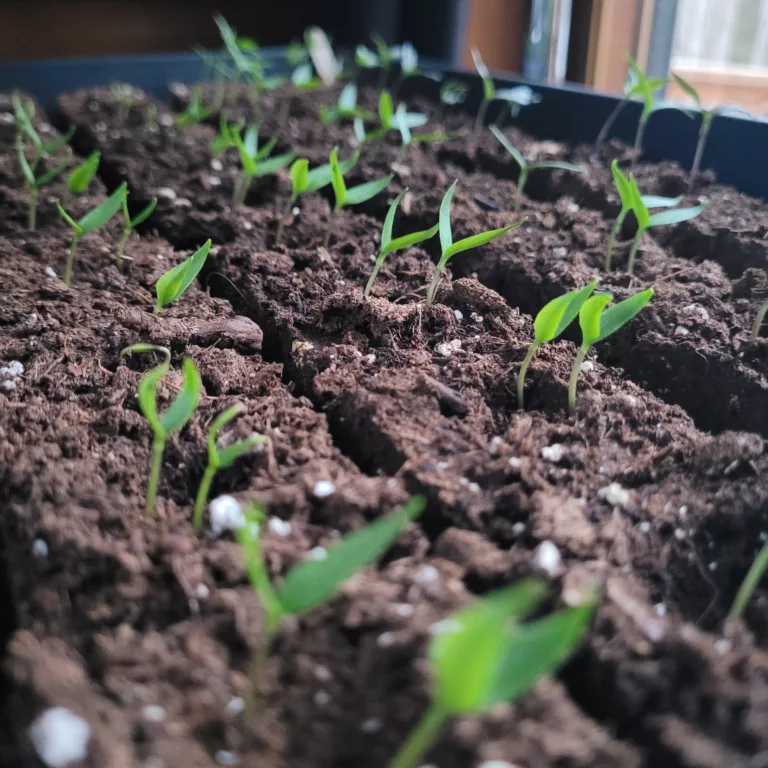
The averages to account when planting per person are:
- How many peppers grow per plant on average
- How many peppers your family eats on average
- How often you’ll eat peppers on average
- How many pepper plants will maximize your grocery savings
By the end, you’ll know how many sweet and hot peppers you should plant for your family, as we put all the information together.
Below are the details on how to configure all of these averages accurately and easily.
Benefits of calculating how many peppers to grow
- Time, energy, and resources all have limitations.
- You’ll maximize your garden space and enjoy a larger variety of vegetables based on what you actually eat by planting all the ideal amounts for your family
- You’ll draw up a realistic map for your garden plant by putting a limit on guesswork.
- You’ll save money at the grocery store by planting the right amount of the most expensive crops
Related: Best vegetable garden Spreadsheet (Google Sheets Planner)
1. How many peppers grow per plant on average
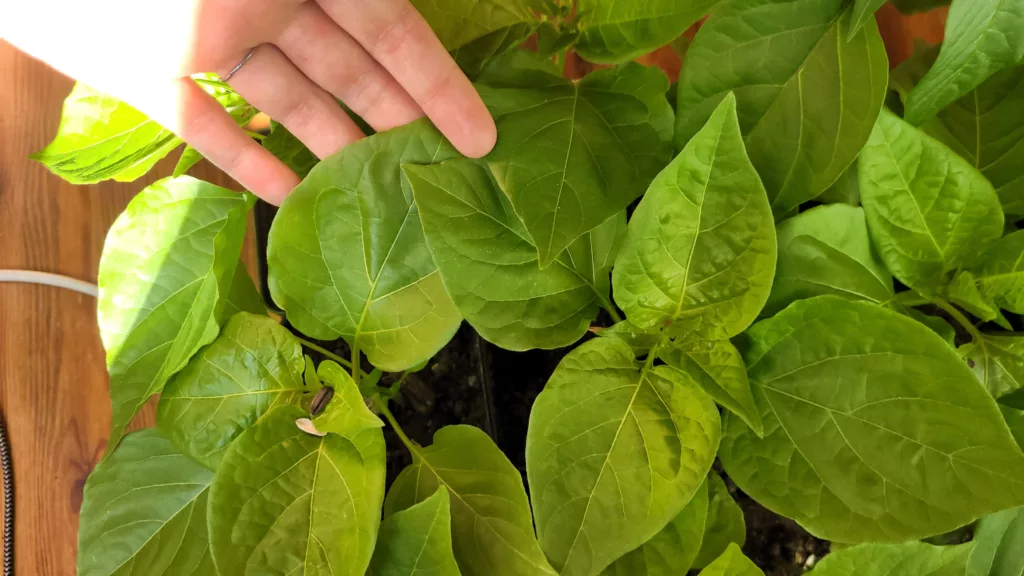
The average number of peppers that grow on a single plant is subject to the type of pepper, the environment, and the care received.
We can base all our numbers on average pepper yield by type (plant variety/cultivar), an average adequate environmental setting, and an average-skilled gardener.
Since endless pepper varieties exist—the best answer for average yield by pepper type comes from the person or place you buy seeds from.
Heirloom and hybrid seeds will perform differently. Heirloom seeds have may have inconsistent yield results based on the unique seeds saved. Hybrid seed suppliers are more likely to provide a consistent yield expectation as they are tested and created varieties.
Overall, most seed producers, including heirlooms, can tell you an average yield to expect.
How many bell peppers do you get from one plant?
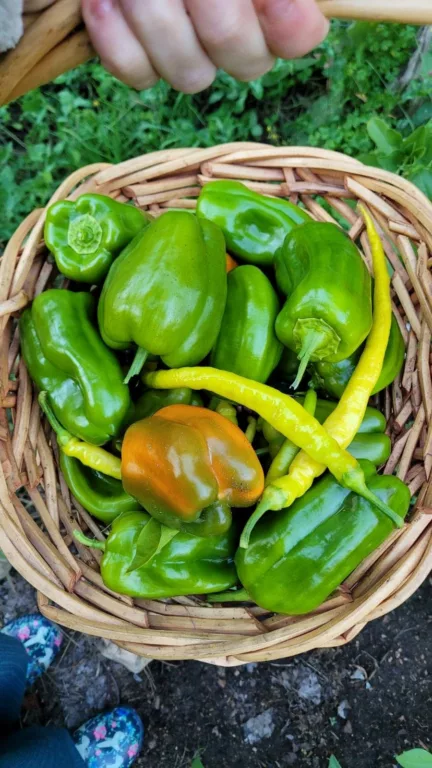
The most popular and easy bell peppers grown in home gardens have a known average yield.
Expect 5-10 bell peppers from large bell pepper varieties and 10-20 bell peppers from smaller bell pepper varieties. Plants that produce large or long bell peppers require more time and energy to fruit. Plants that produce small or short bell peppers fruit sooner, and over a longer time span.
The length of your season can cut your harvests short, and a greenhouse extends your harvests at either end of the season.
How much do sweet peppers yield per plant?
Sweet peppers come in more than just bell-pepper shape and can yield more or less fruit in a given growing season.
We grew these cute heirloom ‘Lesya’ peppers from Rareseeds and. . .
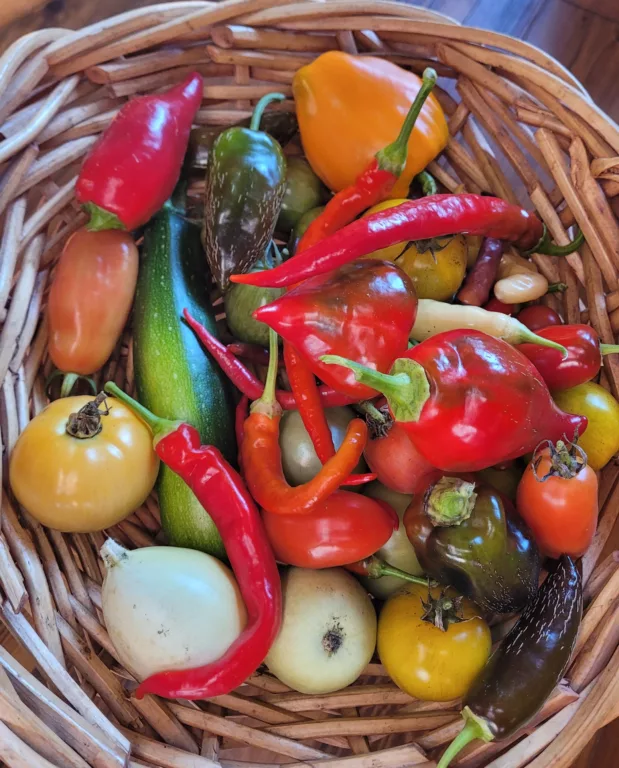
Zone 4 growers report this sweet pepper to produce about the same as a small ‘bell pepper’ which is 10-20 per plant. We’re in zone 5 and can say the same about yield.
With 4 sweet pepper plants, you’ll expect 40-80 sweet peppers. From your first harvest until the first frost, you’ll have a number of sweet peppers to eat fresh every week. The number of weeks you’ll have fresh sweet peppers is based on the length of your growing season.
In general, sweet peppers tend to be larger than hot peppers, so the yield is always less, as it takes more time and energy to produce sweet pepper fruits.
What is the average yield of a jalapeno plant?
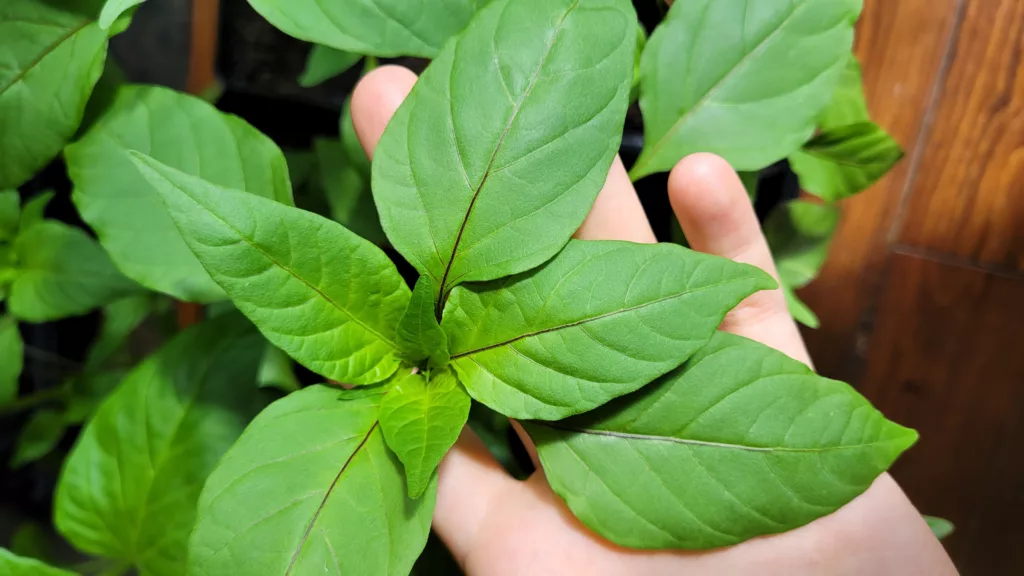
Jalapeno peppers are the most common hot pepper grown and eaten fresh. Since the peppers are smaller than most sweet peppers, you’ll average a greater harvest per plant.
Expect 25-35 jalapeno peppers per plant in most climates. Cold-climate gardeners can expect a total average of 30 peppers per plant from the first harvest to the first frost. Hot-climate gardeners can expect up to 30 jalapenos per plant at once, and a total of 100 per plant over the harvest window.
Cold-climate gardeners have a shorter span of time to grow their pepper plants and prepare them for fruiting—so they only grow to a limited size. A smaller plant holds fewer fruit at once than a larger plant can.
Hot-climate gardeners can grow their pepper plants for longer and have larger, stronger plants that can host more fruit at once. Even over-winter them for a head start.
Both gardeners have the opportunity to employ pruning techniques that allow more branches to grow on small-pepper plants and increase yields.
Branch-heavy pruning techniques (topping) are suitable for small fruiting peppers, like jalapenos and cayenne peppers, but not for large fruiting peppers, like poblanos or sweet bell peppers.
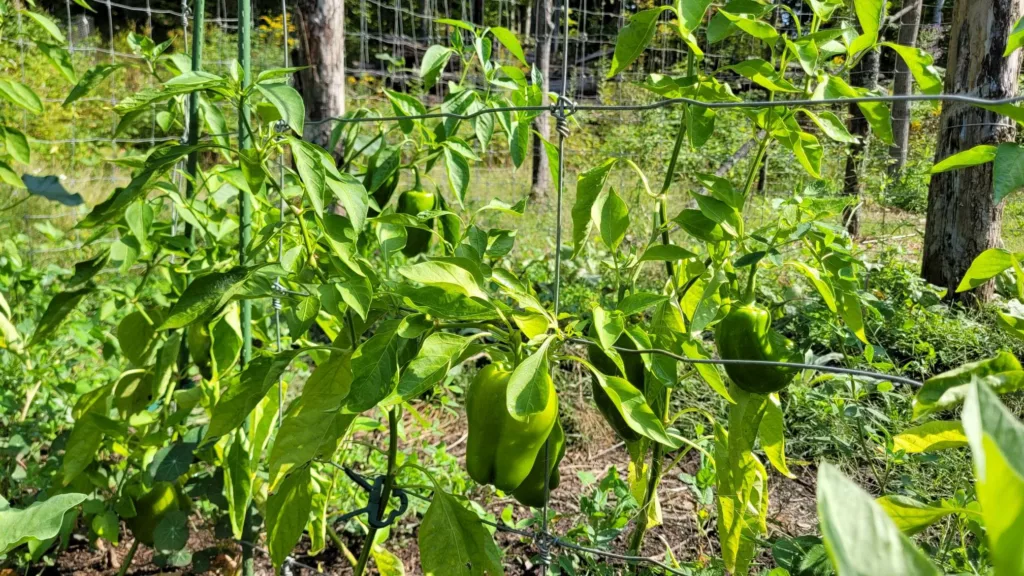
In general, any larger pepper fruits will yield as most bell peppers, and any small pepper fruits will yield as jalapenos.
But every variety produces differently and is best determined by anyone who grows it in your climate.
2. How many peppers your family eats on average
How many bell peppers per year you’ll need to plant is determined on a per-meal, and per-person basis. Why?
Because it’s easy to think of making a meal; how many peppers you realistically use.
From there, you can scale up for a more accurate yearly consumption estimate.
Next time you use bell peppers or hot peppers, take note of how many you used in a single meal, and how many people the meal was for.
Answer these:
- How many bell peppers do you use in a single meal? how many people is that for?
- How many hot peppers do you use in a single meal? how many people is that for?
Divide the number of people each are for to get the “per-meal per-person” amount.
Next, take note of how many times per week you use peppers in meals.
- How often do you add peppers to a meal per day? Per week?
A couple of examples:
How many sweet bell peppers per person?
The number of sweet bell peppers per person can simply be calculated based on average family consumption levels.
On average, 2 sweet bell peppers go into a meal for 4 people. This means you use half a bell pepper per meal per person. Next, track how often you put peppers in meals weekly, for how many months of the year, and divide this average by the plant yield average for the number of plants to grow.
This can either be used to determine how many plants to grow for in-season eating, or for year-round eating.
How many Jalapeno peppers per person?
The number of jalapenos or any other hot peppers to grow per person is determined by the frequency and amount they’re consumed over a year.
On average, you’ll need 1-2 jalapeno plants per person if using 1-2 jalapeno peppers per meal for 4 people, twice a week all year. When jalapeno plants average 30 peppers per plant, 4-7 plants will provide peppers for 104 meals with 1-2 peppers per meal.
If you’re calculating for more than just peppers—without breaking it down to “per meal per person” here, you’ll have less flexibility in disqualifying a family member who doesn’t like spicy food—so I put this feature into my own crop calculation.
3. How often you’ll eat peppers on average
How often you eat homegrown peppers throughout the year depends on availability.
- Do you plan to preserve your harvests?
- Or will you only eat peppers from your garden fresh, while they’re in season?


Now that you’ve determined your weekly frequency of using peppers in meals, are you likely to do this for a full month? How many months?
Do you stop eating sweet peppers, or hot peppers, for particular months of the year?
You’ll want this flexibility in your calculation because you likely eat food more seasonally than you think—even if your eating habits aren’t “in-season seasonal,” you probably have your own seasonal habits with all available foods.
4. How many pepper plants to maximize grocery savings
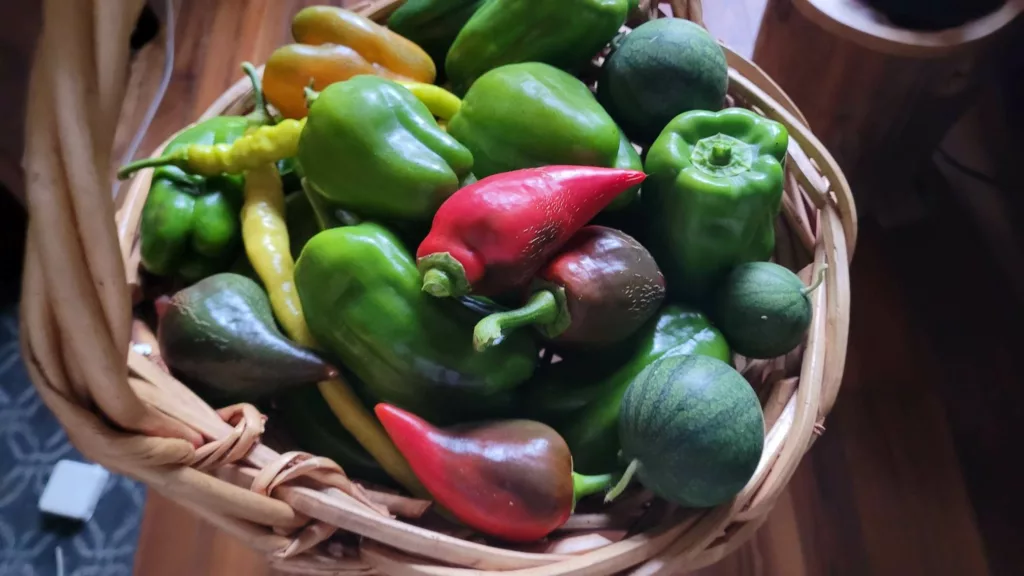
Now is the time to make the final decision. You know how many peppers to plant per person, but. . .
- Will it all fit in your garden?
- Do peppers grow well in your climate and produce at, or above, average?
- Are you good at growing peppers?
Peppers need about 18″ of spacing in rows for low-maintenance less intensive growing.
Square-foot intensive gardening allows for 12″ spacing in well-fed soils with good companion planting.
Every climate produces a more or less ideal environment for our vegetables. Your local gardeners will provide plenty of insights on the best-performing vegetables for your area.
If you’re unsure of your skill level, we can assume that you don’t mess anything up, nor do you perform the optimal pruning techniques and maintenance, and therefore you’ll receive an average yield per plant, rather than the maximum.
Related: Save Money & Grow the Vegetables That Cost You the Most
How to calculate the rest of your garden
This crop calculator makes everything easy, simply punch in the numbers of your average family consumption and frequencies for every common garden vegetable, and out comes the answer.
The research, equations, and averages are done for you.
In the detailed video tutorials, you’ll learn how to add your own crops so you can calculate the expected harvest quantities for anything.
You can even change how many people will partake in eating a given vegetable for better accuracy.

All you need to fill in on yellow:
- Serving amount per meal,
- Weekly and monthly consumption frequencies
- The number of people eating said crop
What you’ll view in orange when yellow is filled:
- Average plants per person for the year,
- How many plants you need to sow per person,
- Total to sow for the family
I hope this has helped you – Happy planning and growing!
Please leave a comment to let me know what you think or if I’ve missed anything!
Recent Posts
There’s no shortage of full-sun ground covers for zone 4 climates! Each plant in this list can withstand the frigid temperatures and also enjoy the hot sun in summer. Full sun means that a plant...
There's no shortage of full sun ground covers, not even in zone 3! Zone 3 climates offer hot but short-lived summers and very cold winters. So each plant in this list can withstand the frigid...

